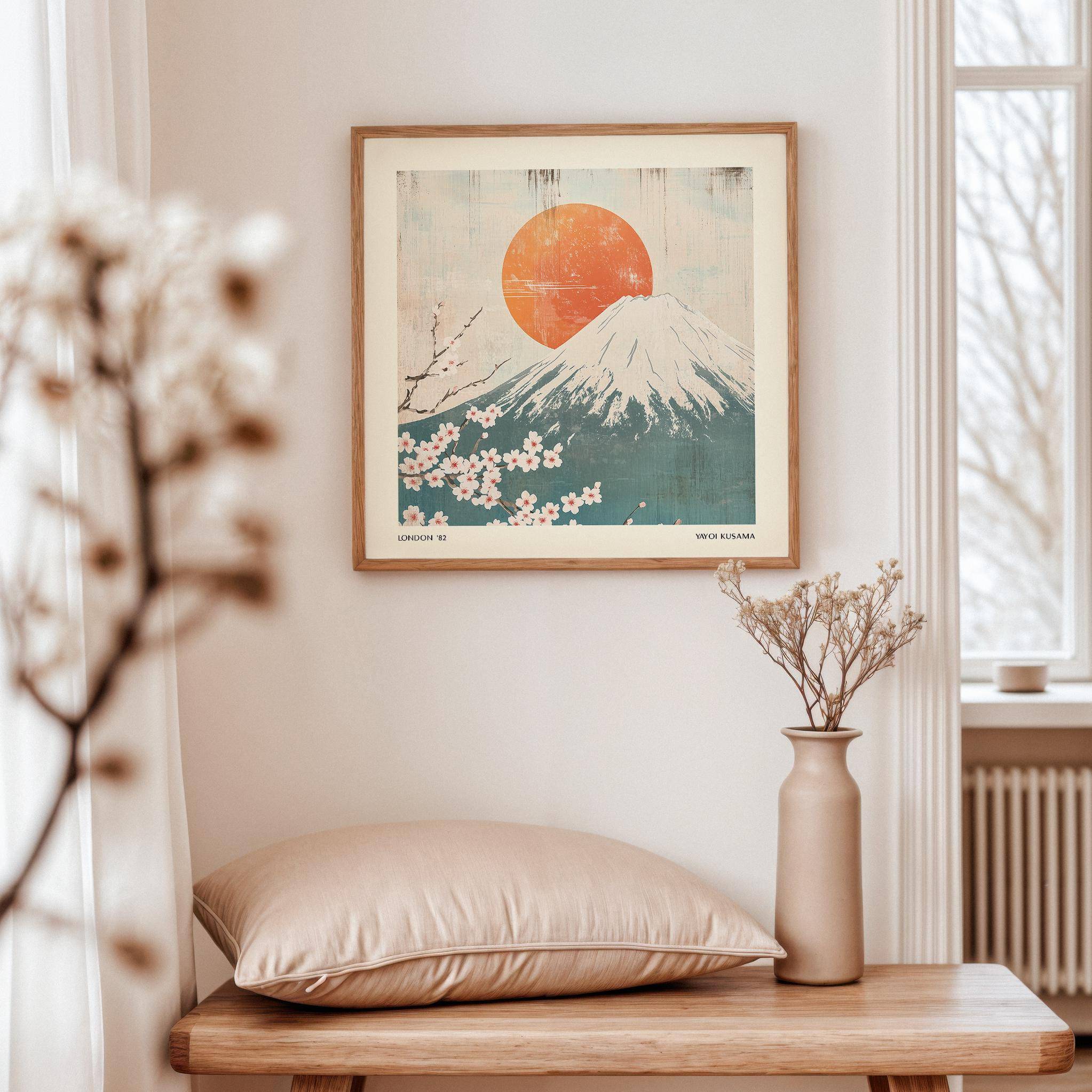Japanese art prints are more than decoration—they’re windows into a rich cultural legacy that’s inspired the world for centuries. From the intricate lines of Japanese art prints to the subtle motifs rooted in nature and folklore, these works bring Japan’s timeless spirit right into your home.
Whether you're drawn to serene landscapes, elegant patterns, or the bold style of legendary Japanese artists like Katsushika Hokusai, this guide will help you explore the best ways to find, choose, and enjoy Japanese art prints today.
Japanese Art Prints
Japanese art prints, especially woodblock prints, are among Japan’s most recognizable contributions to the global art world. These prints were originally made using carved wooden blocks and inks to reproduce intricate scenes—ranging from peaceful nature to dramatic waves, as seen in Hokusai’s iconic The Great Wave off Kanagawa.
Each piece is more than just a picture—it's a cultural artifact, deeply connected to Japanese traditions and philosophies. Whether you hang them in your living room or hallway, they bring a calm, collected energy to any wall they touch.
For those building an art collection, Japanese prints offer an ideal balance of aesthetic value, history, and affordability. They’re also easy to mix with other artworks, from modern minimalism to antique pieces.
Japanese Art
To understand Japanese art prints, it helps to know the broader world of Japanese art. Spanning thousands of years, it’s a tradition rooted in nature, balance, and storytelling.
You’ll find:
-
Seasonal motifs like cherry blossoms, cranes, or Mt. Fuji
-
Themes of transience and simplicity from Zen Buddhism
-
Decorative patterns from textiles and ceramics
-
Symbolic animals like koi fish, foxes, or dragons
Much of Japanese art focuses on the small details of everyday life. Even the smallest painting may reflect years of philosophy, seasonal awareness, or craftsmanship. And that’s what makes Japanese art so lasting—it’s art that pays attention.
Today, Japanese design continues to influence everything from fashion and architecture to contemporary printmaking and digital illustration.
Japanese Artists
Behind every great print is an artist—often more than one. Traditional woodblock prints involved a whole team: the artist, the carver, the printer, and the publisher. And while some artists are anonymous, others left a permanent mark.
Notable Japanese artists to explore:
-
Katsushika Hokusai – Most famous for The Great Wave, he created over 30,000 works in his lifetime, capturing both landscapes and folklore.
-
Utagawa Hiroshige – Known for soft, atmospheric scenes and travel landscapes like The Fifty-three Stations of the Tōkaidō.
-
Kitagawa Utamaro – Master of beauty prints, especially portraits of women.
-
Yayoi Kusama – A modern icon blending tradition with bold pop motifs.
Each of these artists adds something different to the world of Japanese art prints, from historical elegance to bold, modern interpretation.
Katsushika Hokusai
No conversation about Japanese art prints is complete without Hokusai. Born in 1760, this legendary artist spent over 70 years creating paintings, sketches, and, most famously, woodblock prints.
His most recognizable work, The Great Wave off Kanagawa, is just one of many in his Thirty-Six Views of Mount Fuji series. What makes Hokusai’s work so striking isn’t just the technique, but his ability to blend realism with movement, nature, and myth.
Hokusai didn’t just reflect Japanese culture—he helped shape it. His works influenced European artists like Monet and Van Gogh and continue to be featured in major exhibitions around the world.
Looking for a statement piece? A Hokusai print will always be a strong, timeless choice.
Choosing the Right Japanese Art Print for Your Home
When it comes to adding Japanese art to your home, there’s no one-size-fits-all. Your walls should reflect your taste, your space, and what kind of energy you want the artwork to bring.
Here’s how to choose:
-
Go with classic motifs like Mount Fuji or cherry blossoms for calm, traditional style
-
Choose bold works like Hokusai’s wave for a striking centerpiece
-
Mix prints with modern decor for a balanced contrast
-
Think about the room’s tone—soft prints in bedrooms, brighter ones in living spaces
You don’t need to fill every wall. Sometimes, a single thoughtful piece speaks louder than a whole gallery.
Where to Find Japanese Art Prints
There are plenty of places to find quality Japanese art prints today. From museum-quality reprints to handmade originals, there’s something for every budget.
Try exploring:
-
Online collections of vintage and modern Japanese artists
-
Specialty stores focusing on Japanese culture
-
Art fairs or exhibitions featuring woodblock works
-
Laboo Studio’s curated selection of wall prints, inspired by timeless Eastern styles
The Lasting Appeal of Japanese Art
Why do Japanese art prints still feel fresh, even centuries later? It’s because they reflect values that feel more relevant than ever: simplicity, balance, and respect for nature.
In a world that often feels chaotic, a well-chosen piece of Japanese art can bring clarity and calm into your home. It doesn’t shout. It doesn’t demand. It simply exists—quiet, confident, and beautiful.
So whether you’re just discovering Japanese art or looking to deepen your collection, now is the perfect time to bring that sense of harmony into your life.
Choose a print that speaks to you—and enjoy it for years to come

















































